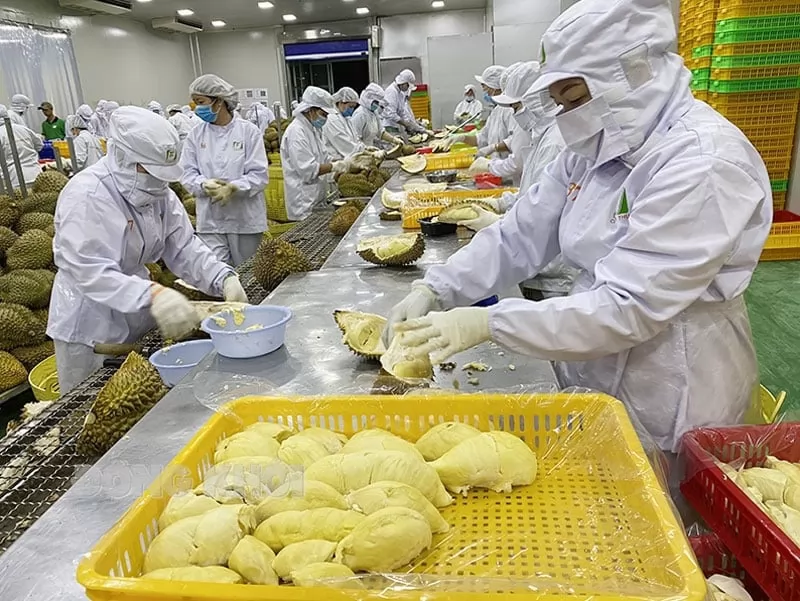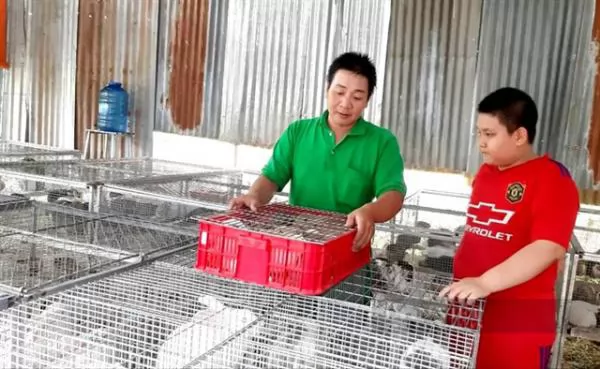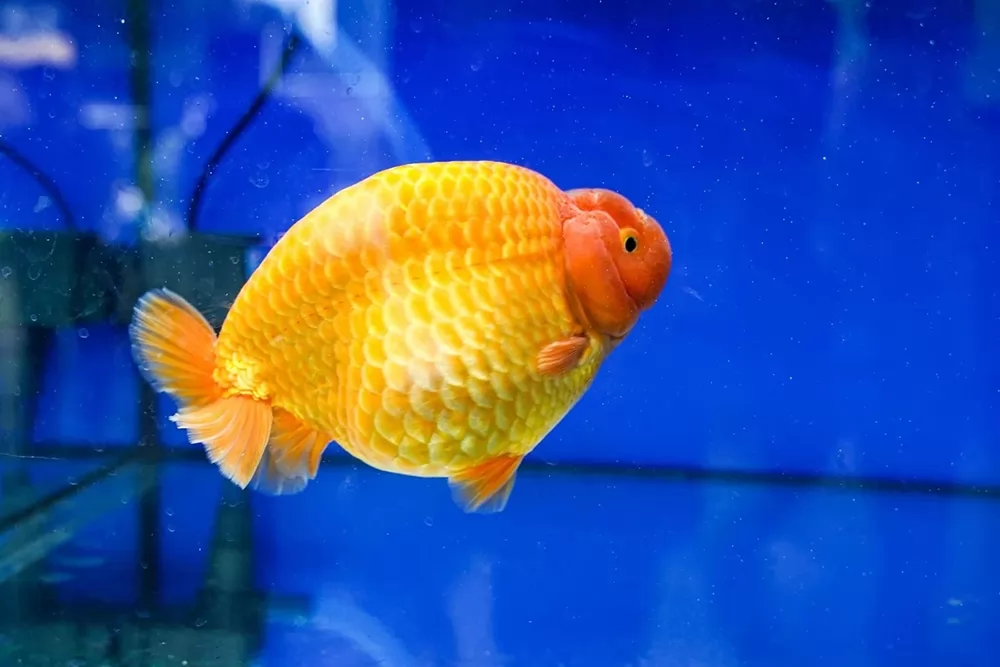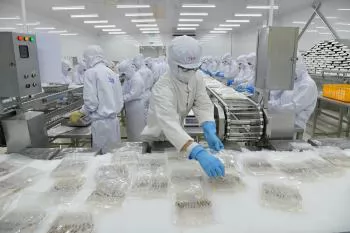Exports of frozen durian see a threefold increase in volume

(VAN) According to data presented at a press conference by the Ministry of Agriculture and Environment on July 3, frozen durian exports from Vietnam have seen a threefold increase in volume.
Mr. Do Hong Khanh, Chief of Office at the Department of Crop Production and Plant Protection under the Ministry, highlighted that Vietnam's durian export market encountered considerable obstacles in the initial months of 2025, as numerous importing nations imposed stricter food safety regulations. Warnings were primarily triggered by excessive pesticide residues, the detection of heavy metals such as cadmium, and the presence of certain banned chemicals.
Durian export turnover in the first 5 months of 2025 reached about 386 million USD, down 58% compared to the same period in 2024. Photo: Linh Linh.
Durian export turnover in the first 5 months of 2025 reached about 386 million USD, down 58% compared to the same period in 2024. Photo: Linh Linh.
In a decisive move, the Ministry, led by Minister Do Duc Duy, has implemented a number of measures aimed at quality control and the restoration of exports. The durian market is showing signs of recovery, attributed to the collaborative efforts of local authorities, businesses, and farmers. Notably, the frozen durian segment is experiencing positive developments.
During the initial six months of 2025, Vietnam recorded the export of 5,217 shipments of fresh durian, amounting to nearly 130,000 tonnes in total volume. In a striking development, frozen durian shipments soared to 388, amounting to 14,282 tonnes, which represents more than a threefold increase compared to the same period last year.
The recent growth can be attributed to the opening of significant markets, notably marked by the signing of a protocol with China in August 2024, which facilitates the export of frozen durian. The simultaneous drive for deep processing and product diversification has alleviated pressure on the fresh durian market, while also generating new export opportunities for businesses.
In May 2025, the Ministry convened a national conference focused on sustainable durian development, with the objective of tackling the challenges encountered by enterprises, cooperatives, and farmers. The regional linkage model that connects growing areas, packing facilities, and export businesses is being reinforced to guarantee quality. Investment in processing and logistics is being promoted to increase value-added.
In response to China's tightened controls, the Ministry sent a working group headed by Minister Do Duc Duy to Beijing in May 2025 for direct discussions with the General Administration of Customs of China (GACC). As a result, 829 growing area codes and 131 packing facilities have been added. Between July 12 and 17, 2025, experts from the GACC are scheduled to travel to Vietnam to inspect the production, packing, and export chains associated with durian.
The Ministry has mandated that testing laboratories enhance their capacity to conduct tests on cadmium and yellow O to comply with stringent regulations regarding heavy metal residues. Currently, the GACC has granted approval to 24 laboratories for cadmium testing and 14 laboratories for yellow O testing.

Regular press conference of the Ministry of Agriculture and Environment on the morning of July 3. Photo: Linh Linh.
The Ministry is creating a cadmium distribution map for significant durian-growing regions. This initiative involves collecting soil, water, and fertilizer samples from the Central Highlands, Southeast, and Mekong Delta to evaluate potential contamination risks. New cultivation protocols have been implemented, promoting the adoption of organic and biological fertilizers in place of those containing elevated levels of cadmium. Regular monitoring will be implemented during production and packaging to reduce the likelihood of violations.
The Ministry has completed a draft circular that outlines the issuance and management of planting area codes (MSVT) and packing facility codes (CSDG). This new guidance introduces stricter, more transparent, and practical regulations. The draft is presently undergoing evaluation by pertinent ministries, provincial authorities, and stakeholders within the export chain, with an issuance anticipated in the near future.
The Plant Protection and Cultivation Department has finalized the digitization of all MSVT and CSDG data and introduced a nationwide traceability system simultaneously. By June 2025, Vietnam had issued 1,396 growing area codes and 188 packing facility codes that meet the requirements for official export to China.
The Ministry is soliciting final feedback on a draft procedure for establishing quality control measures for packing facilities involved in durian exports. This step is considered vital for guaranteeing that products adhere to standards at the final stage before entering international markets.
Department of Crop Production and Plant Protection reports a significant increase in fresh durian exports during May and June, rising from over 32,000 tonnes to 74,000 tonnes per month. The current trend indicates a potential recovery for the durian industry, particularly as the primary harvest period in the Central Highlands nears, from August to October.
Despite this outlook, the ability to maintain growth momentum will significantly hinge on the actions of enterprises and farmers in diligently fulfilling their commitments to importing countries. Effective and timely oversight by state management agencies, especially regarding the issuance and administration of planting area codes, will be crucial for ensuring a stable and sustainable trajectory for Vietnam's durian industry in the latter half of the year. The GACC has recently approved 829 additional growing area codes and 131 packing codes, raising the total number of licensed codes to over 1,800.
Author: Linh Linh
Translated by Dieu Linh
Maybe you are interested

Hopping on the trend: Tiền Giang farmer finds fortune in rabbits
TIỀN GIANG — Đặng Hồng Phúc was one of the first large-scale rabbit breeders in Chợ Gạo District, in the Mekong Delta province of Tiền Giang, turning to them after failing to make ends meet in raising other livestock.

Ho Chi Minh City's ornamental fish sector rakes in nearly USD 15 million annually
Exports of ornamental fish generate nearly USD 15 million annually for Ho Chi Minh City, affirming the sector's position as a distinctive economic component of the city's modern urban agriculture structure.

Uncertain outlook for Vietnam's seafood exports in the year-end months
Although Vietnam's seafood export revenue in the first half of the year grew by 19%, concerns are mounting about a potential decline in the second half due to tariff pressure from the United States.





